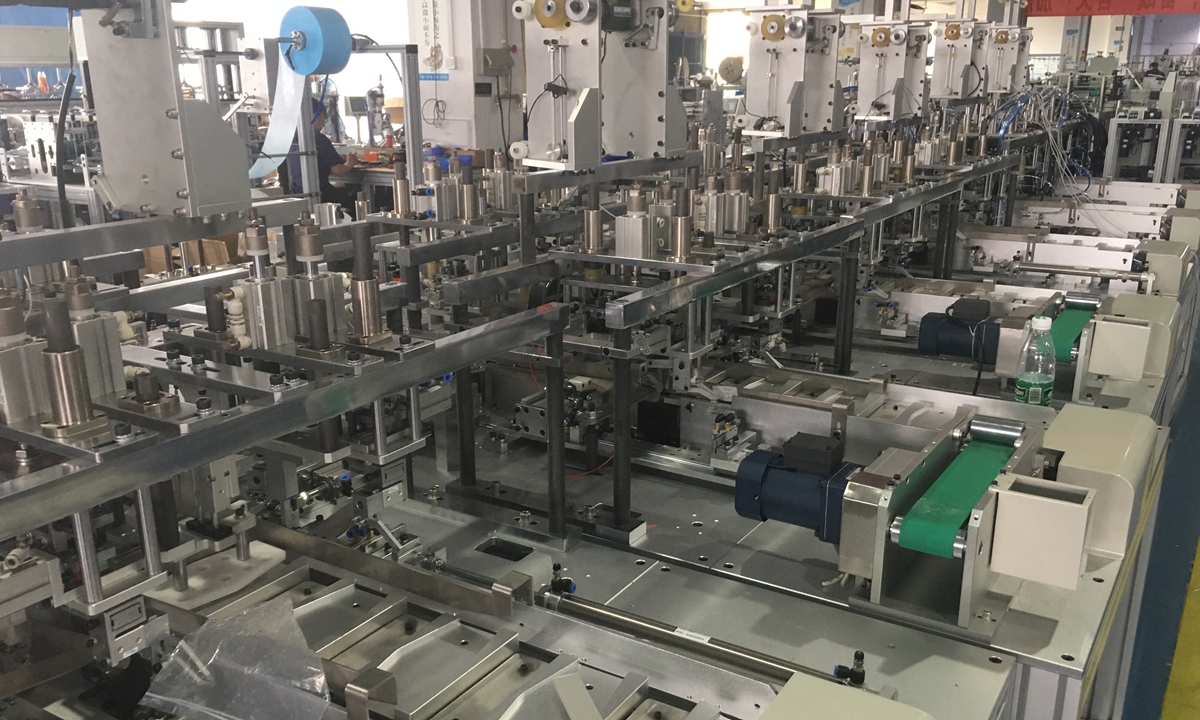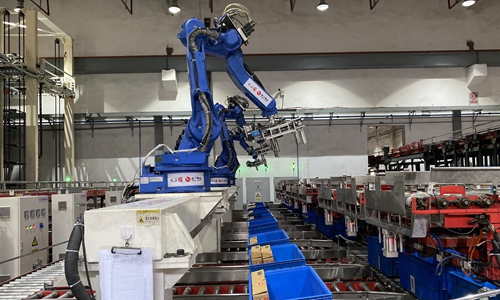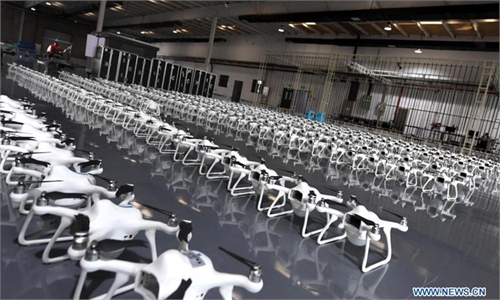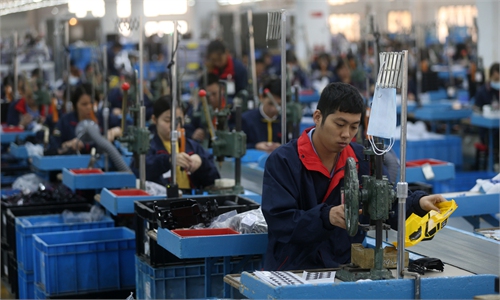Key meeting calls for efforts to strengthen self-reliance of China's industrial chain

Half-finished mask machines in KYD, a mask machine developer and producer in Dongguan, Guangdong Province Photo: Wang Bozun/ GT
China's Ministry of Industry and Information Technology (MIIT) held a national work conference on Monday and Tuesday, calling for breakthroughs to be made in basic and key areas along with efforts to stabilize and optimize industrial and supply chains in 2021, especially raising its self-reliance capability.
The meeting calls for efforts to make innovation breakthroughs in basic and key areas. "Efforts will be made to raise science and technological self-reliance to strategically support industrial development by focusing on basic technologies and core areas," reads a statement released after the meeting.
It also urged focusing on stabilizing and optimizing industrial and supply chains. The meeting asked to strengthen self-reliance capability of industrial and supply chains in key industrial segments relevant to national well-being and people's livelihood as well as the lifeline of the national economy.
To achieve this, it proposed comprehensive evaluation of the country's manufacturing sector to promote and upgrade the whole industrial chain.
With smart manufacturing as a direction, the meeting also asked to improve the resilience of industrial and supply chains by cementing digitalization and industrial network innovation.
The meeting also asked to orderly boost the establishment and application of 5G networks.
By focusing on the overall picture of building the country into a manufacturer of quality and network power, it will help support the growth of national economy within a reasonable range and ensure a good start of the 14th Five-Year Plan period (2021-2025).
At the conference, Minister of Industry and Information Technology Xiao Yaqing said that efforts will also be made to promote low-carbon industrial development and green manufacturing next year. China will resolutely cut the output of crude steel in 2021, he said.
China previously announced that it will strive to reach peak carbon dioxide emissions by 2030 and achieve carbon neutrality by 2060.
In recent years, China has taken solid steps to cut overcapacity, particularly in the energy-consuming steel sector. China has met its target of cutting steel output by 150 million tons two years in advance. Energy consumption per unit of industrial output by China's designated large enterprises also saw a remarkable drop of 16 percent, according to the conference.
In the 13th Five-Year Plan period (2016-2020), the country's industry and information technology development made historical achievements. Its manufacturing value-added reported annual average growth of 8.7 percent between 2016 and 2019 to 26.92 trillion yuan ($4.12 trillion), accounting for 28.1 percent of global total.
The country's digital economy posted a growth of 16.6 percent year-on-year during the period to 35.8 trillion yuan, accounting for 36.2 percent of the world's total.



